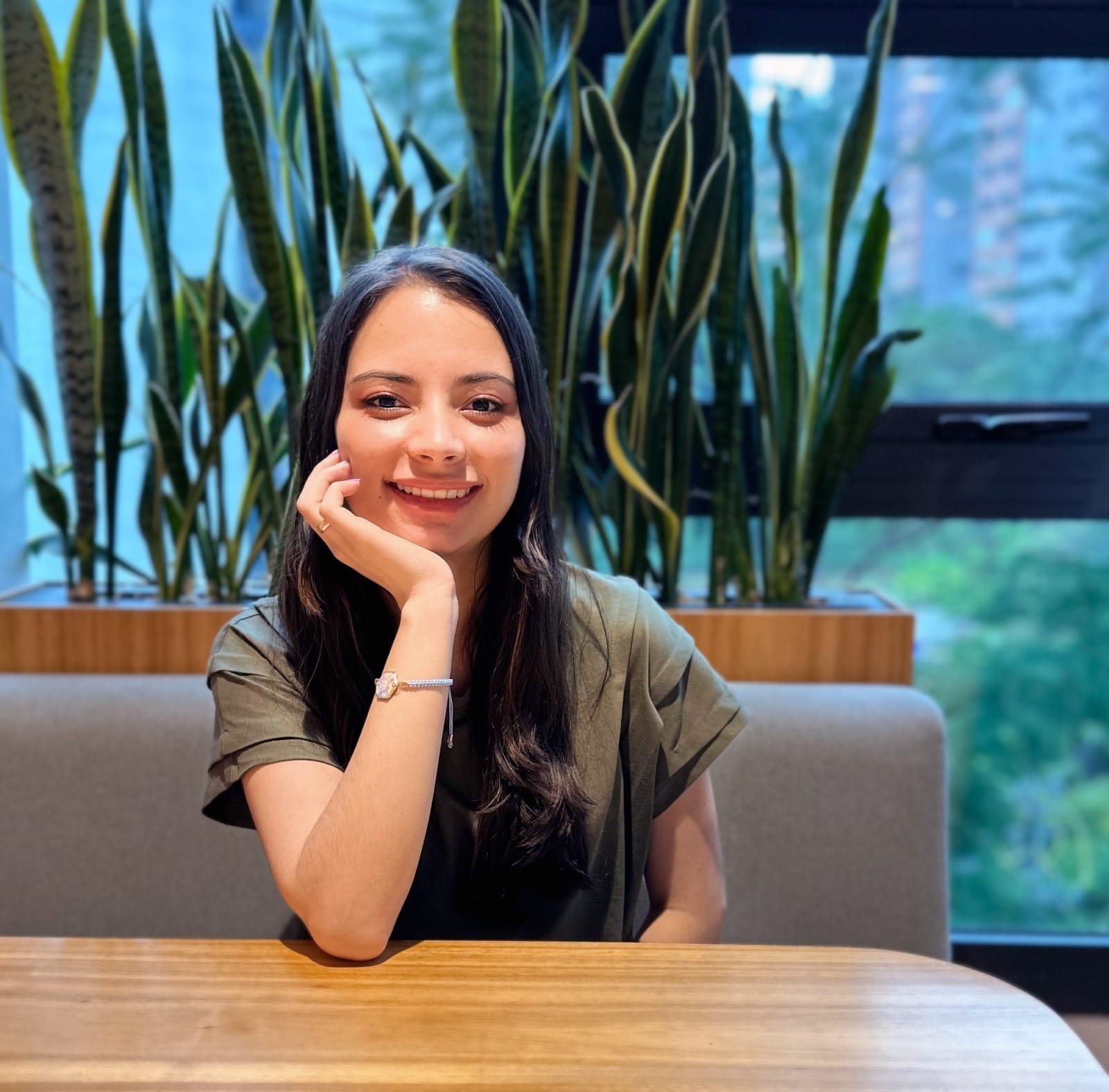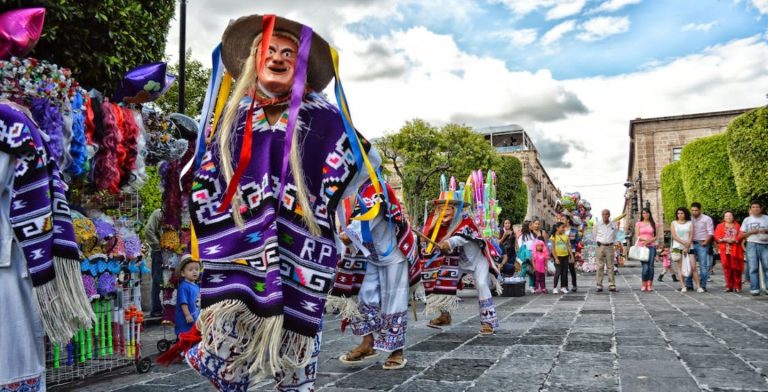Travel guide for Hawaii: Everything you need to know
Don't miss a beat with this travel guide to Hawaii. Try the best food on the island and remain connected without any issues!
You’ve arrived in the beautiful Aloha State of Hawaii. Hawaii, a tropical paradise in the Pacific Ocean, has something to offer every kind of tourist. Each island in the Hawaiian archipelago has its own distinct personality and set of attractions, from the Big Island’s lava fields to Oahu’s surf breakers, from Maui’s peaceful shores to the wilderness of Kauai. Learn about everything you need and all you can do with this travel guide to Hawaii. Get ready for adventure!
Explore the islands, taste some local fare, and marvel at the lei-making masters. Be respectful of the local culture and careful not to disrupt Hawaii’s delicate ecosystems while you’re here. Let this travel guide serve as your trusty companion as you embrace the aloha spirit and set out on a memorable Hawaiian adventure, whether this is your first trip to Hawaii or you’ve returned many times afterward.
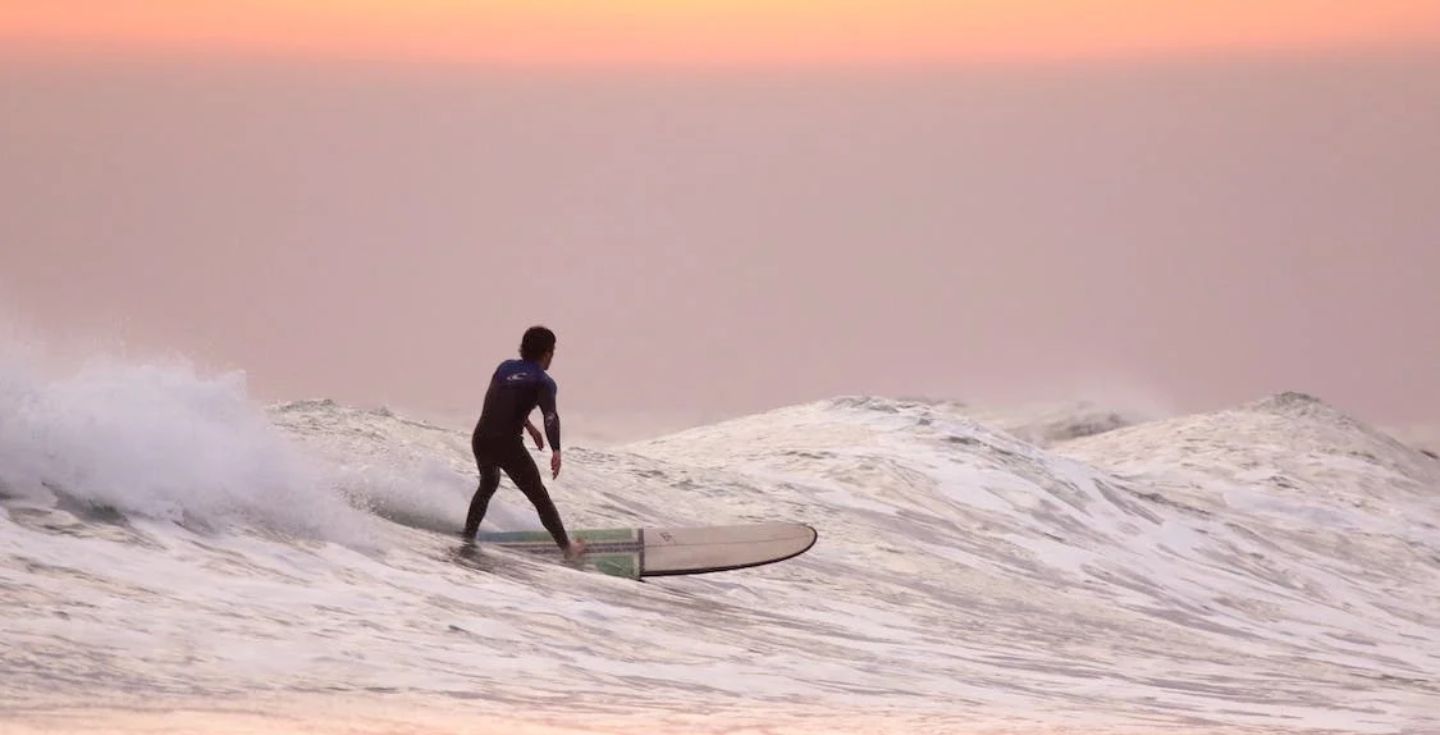
What you should know about Hawaii: General information
Hawaii is a fascinating group of islands in the middle of the Pacific Ocean and the 50th and most recent U.S. state to join the union. Hawaii, a state made up of eight major islands and countless smaller islets, is a tropical paradise that draws visitors from all over the world. The islands feature a wide variety of ecosystems, from tropical rain forests and volcanoes to deserted beaches and rocky shorelines.
- Temperature: Year-round, average highs in Hawaii are between 75 and 85 degrees Fahrenheit (24 and 29 degrees Celsius), according to the island’s tropical climate. Temperatures, however, can vary widely depending on the island and altitude.
- Climate: Hawaii’s varied topography and elevations produce a wide range of climatic conditions. Temperatures and humidity levels are typically higher along the coast, whereas inland places may be cooler and wetter.
- Currency: The United States Dollar (USD) is the state-issued currency in Hawaii. ATMs and establishments that take credit cards are plentiful.
- Time zone: HST (Hawaiian/Aleutian Standard Time) is the time zone used in Hawaii; it is 10 hours behind UTC (Coordinated Universal Time).
Don’t make the rookie mistake of exchanging your money at the first kiosk you find at the airport. Local banks like the Bank of Hawaii and First Hawaiian Bank offer currency exchange services to visitors at the best rates. Tourist hotspots and indoor shopping malls sometimes include onsite currency exchange bureaus or kiosks that offer preferential exchange rates.
Larger hotels and resorts may offer this amenity, although their prices may be higher than those of smaller establishments. You can also use your debit or credit card to withdraw US dollars from ATMs, but beware of any foreign ATM fees. This is an important aspect to keep in mind in the Hawaii travel guide.
What to consider when traveling to Hawaii
There are a few things to bear in mind when organizing a vacation to Hawaii and creating a travel guide that can help make your time there more pleasant:
Visa: Entry Requirements and Visa Requirements As a U.S. state, Hawaii does not require a visa for U.S. citizens. Foreign visitors to the United States should research visa requirements and make sure their passports have at least six months remaining before their departure date.
We’ve set out the following table regarding some countries that require or do not, a visa to enter the USA: For more specific information, contact the USA’s embassy or consulate in your country. In case you require a visa to enter the USA, we recommend requesting the appointment with sufficient time before your travel. It’s actually recommended not to purchase any tickets or make reservations before you actually get your visa.
| Country | Visa Required? | Visa Type (if required) |
|---|---|---|
| United Kingdom | Yes | B-1, B-2, or ESTA (for short visits) |
| India | Yes | B-1, B-2, or other specific visa types |
| China | Yes | B-1, B-2, or other specific visa types |
| Brazil | Yes | B-1, B-2, or other specific visa types |
| Russia | Yes | B-1, B-2, or other specific visa types |
| South Africa | Yes | B-1, B-2, or other specific visa types |
| Australia | No | Visa-free for short visits (ESTA required for some travelers) |
| Canada | No | Visa-free for short visits |
| Germany | No | Visa-free for short visits |
| Japan | No | Visa-free for short visits |
Safety and Security
It is widely held that Hawaii is a safe place to visit. But much like any other tourist destination, it’s important to exercise common sense. Safety is a priority in our travel guide for Hawaii. Take care when swimming or snorkeling, as ocean conditions can change quickly, and watch your valuables in crowded areas.
Culture
Native Hawaiians have greatly contributed to Hawaii’s culture; visitors should be mindful of this fact. The Hawaiian word “aloha” refers to those qualities as well as respect and kindness. Get a feel for the local culture by learning some essential Hawaiian phrases and terminology and taking part in traditional activities like hula classes and luaus.
Internet
Staying connected in Hawaii is a breeze and we want to include that in our travel guide. You can always get a local SIM card after you get there, but an eSIM is far more convenient. Here’s how you use an eSIM to ensure constant connectivity:
Before you leave for Hawaii, check if your phone supports eSIMs. When you finally get your hands on an eSIM, be sure to activate it according to the guidelines laid out by your service provider. To achieve this, you will need to either scan a QR code or enter the eSIM information manually.
- Data Packages Pick a data plan that works for you, whether it’s a certain number of gigabytes or minutes. There are eSIM companies that have packages tailored to Hawaii visitors.
- Handset Compatibility: Verify that your mobile handset supports eSIM. Many high-end smartphones can support eSIMs.
- The Power of Linking Up: By activating your eSIM, you’ll be able to make and receive calls, as well as use GPS navigation apps, so you can keep in touch while you’re out and about in Hawaii.
Get ready for the experience of a lifetime!
Besides all the recommendations in the article, it is vital to get internet while traveling to Hawaii, and with Holafly’s unlimited data eSIM for Hawaii, you make it quick and easy. With 5% OFF. Code: MYESIMNOW5
Ideal times to visit Hawaii
When you should go to Hawaii for the best weather and holiday celebrations depends a lot on your personal preferences. For your Hawaii travel guide, organize your travel dates with the best festivities. Hawaii is a year-round party spot with several festivals and cultural events. Here is a list of some of the most joyous and celebratory times to go:
- Hawaiian Cultural Festivals (Year-Round): There are numerous festivals and events held throughout the year in Hawaii to honor the state’s long history and unique culture. Traditional luaus, when hula is performed, and other cultural shows fall into this category. Any time of year is great for experiencing Hawaiian culture; however, the summer months usually have more activities.
- Aloha Festivals (September): The month of September is dedicated to the Aloha Festivals, a series of activities that honor Hawaiian culture via song, dance, and storytelling. Waikiki on the island of Oahu hosts the largest of these celebrations, which include parades, live performances, and cultural displays.
- Merrie Monarch Festival (April): A highlight for hula fans is the annual competition held in Hilo on the Big Island in April. Featuring performances, art displays, and a procession, it highlights the finest hula dancers from all the islands.
- Hawaii International Film Festival (November 4th): The Hawaii International Film Festival is a popular event for moviegoers every November. There are premieres, special events, and screenings of films from all around the world, including Hawaii.
- Hawaii Food & Wine Festival (October): The Hawaii Food and Wine Festival is an annual event that takes place in October and is a must-see for any foodie. It highlights Hawaii’s distinct culinary culture and features celebrity chefs from around the globe.
Which is the most convenient month to visit Hawaii?
Depending on your schedule, budget, and other factors, any month can be the best time to visit Hawaii, add all this in your travel guide. The months of April through June and September through November are the best times to visit the islands because of the pleasant weather, smaller crowds, and lower pricing.
Summer (July and August) offers beautiful weather but comes with crowded attractions and higher rates, while winter (December to February) is the peak tourist season with higher prices and festive events. March can serve as a happy medium between the frenetic pace of winter and the relative calm of spring. Overall, you can’t go wrong with any month of the year when visiting Hawaii due to the consistently nice weather.
(Connect easily with the iPhone 14)
How do I get to Hawaii?
Hawaii is an isolated archipelago in the middle of the Pacific Ocean; thus, travel there typically involves water or air. Here’s a rundown of the various ways to go to the Aloha State:
By air
The first option is to take a commercial flight. Commercial flights to one of Hawaii’s main airports are the most prevalent means of arrival. The busiest airport and primary entry point to the other islands is Honolulu International Airport (HNL) in Oahu. Key airports on the other Hawaiian islands include Maui’s Kahului Airport (OGG), Kauai’s Lihue Airport (LIH), and the Big Island’s Kona International Airport (KOA). Direct flights to Hawaii are available from many major U.S. cities and some international hubs. It’s important to also keep your flight dates and flight numbers in your travel guide for Hawaii.
Domestic Flights: Hawaiian Airlines, Southwest Airlines, and other local carriers offer convenient interisland flights so that you can hop from island to island during your Hawaiian vacation.
By sea
Cruise Ships: Some cruise lines do provide trips to the Hawaiian Islands. However, it’s not the most popular way to get there. It’s not uncommon for cruise ships to visit many Hawaiian islands when they set sail from the West Coast of the United States. They take more time than flying because of the distance and duration of the trip.
Yachts and sailboats for private use: Experienced sailors can travel to Hawaii on their own private yacht or sailboat. Due to the large distances and potentially hazardous weather conditions, thorough planning of the journey is needed.
On the ground (Within Hawaii)
Rental Cars: After touching down in Hawaii via airplane, you can go on a more in-depth tour of the islands by hiring a car. Airports and other high-traffic locations often have car-rental firms. However, booking in advance is recommended, especially during busy travel times.
Transportation Services: The islands of Oahu and Maui are the only ones where you can find reliable public transportation in Hawaii. Use “TheBus,” which operates across Oahu, to go around the island. The Maui Bus is the island’s public transportation system. However, other islands have fewer public transportation options, making vehicle rentals more practical.

Immerse yourself in the delicious Hawaiian Cuisine
Hawaiian food is a fusion of flavors and techniques brought to the islands by the many different people. There are a few staples that are enjoyed all around the state. Some of the many influences on classic Hawaiian fare are listed below:
- Kalua pig: Hawaiian kalua pig is traditionally cooked in an underground oven called an imu. The pork is rubbed with salt and roasted slowly to get a delicious, smokey texture. You’ll typically find this dish on the menu at luaus and other festive gatherings.
- Poke: Diced raw fish (tuna or octopus) is seasoned with soy sauce, sesame oil, green onions, and chili peppers. The islands’ cuisine is known for its freshness and deliciousness.
- Laulau: Wrapped in taro and ti leaves and cooked till tender, laulau can be made with pork, chicken, or fish. The meal, which gets its distinctive flavor from the leaves, is typically eaten with rice or poi (mashed taro root).
- Poi: Poi, a staple food in Hawaii, is cooked taro root. After being crushed and fermented, it turns into a thick, purple paste. This paste has a subtle sweetness and an earthy aftertaste. Poi is a staple in Hawaiian cooking, although its flavor is an acquired one.
Top 5 cities to visit in Hawaii:
Cities and villages all around Hawaii’s islands offer visitors their own take on the state’s famed natural beauty and culture. Listed below are the five most popular tourist destinations in Hawaii, along with brief descriptions of each.
- Honolulu (Oahu): Honolulu, on the island of Oahu, is the state capital and largest city of Hawaii. It has an exciting combination of urban and natural sights. Waikiki Beach, one of Honolulu’s most well-known attractions, is just one of the city’s many gorgeous beaches.
- Lahaina (Maui): Its Front Street is a terrific spot to stroll because it’s filled with galleries, boutiques, restaurants, and pubs. Attractions like the Lahaina Historic Trail and the Baldwin Home Museum showcase Lahaina’s past. During the winter, Lahaina Harbor is a popular departure point for whale watching trips, and sunset vistas.
- Kailua-Kona: (Big Island): Close to the Kona Coast, famous for its crystal-clear waters and rich marine life, makes it a popular destination. Visit the lively Ali’i Drive, filled with restaurants, boutiques, and cafés, and the old Hulihee Palace. Visit local coffee plantations and learn about Kailua-Kona’s renowned Kona coffee.
- The Big Island of Hawaii (Hilo): Located on the eastern coast, you can see active volcanoes, walk through lava tunnels, and experience strange landscapes at Hawaii Volcanoes National Park. Hilo is home to the stunning waterfalls of Rainbow Falls and Akaka Falls, the Liliuokalani Gardens and the Panaewa Rainforest Zoo.
- Poipu (Kauai): Poipu Beach Park, where you may snorkel with green sea turtles, is one of the island’s most popular attractions. Allerton Garden, renowned for its gorgeous landscapes and sculptures, and the nearby Spouting Horn blowhole are also worth seeing. Poipu is a popular choice for a relaxing vacation because of the variety of restaurants and hotels available there.
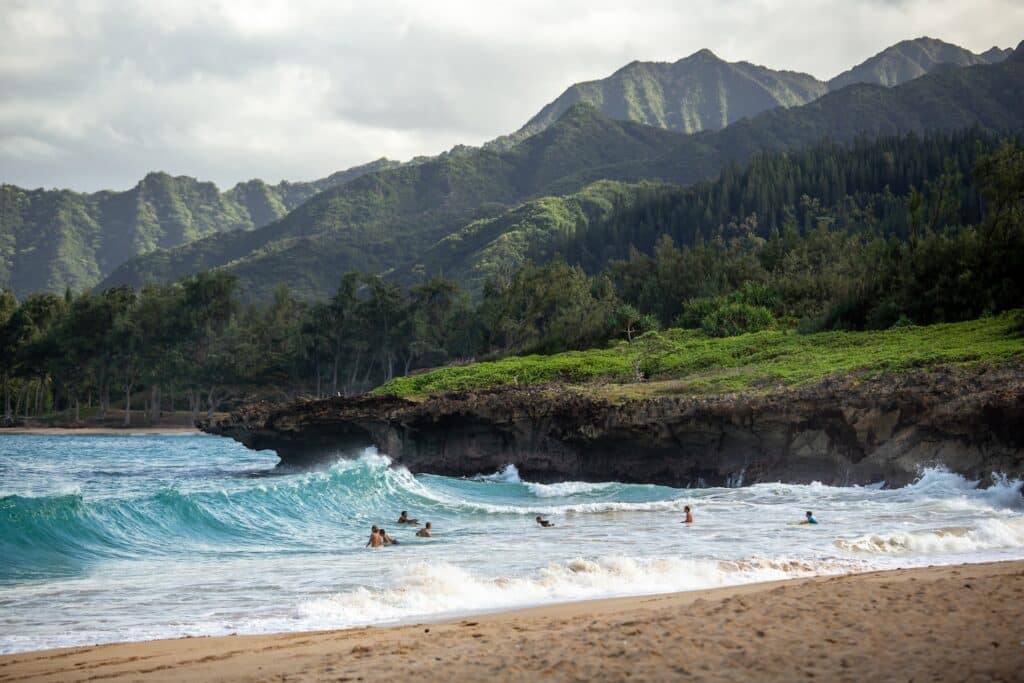
Hawaii’s top 10 beaches
Hawaii’s beaches are world-famous for their stunning beauty and variety. Hawaii is home to some of the world’s most beautiful beaches.
Check out the top 10 beaches in Hawaii to see if you’ll be staying close to one and write them down in your travel guide!
- Waikiki Beach, Oahu: Waikiki Beach, is famed for its calm waves, picturesque view of Diamond Head, and lively vibe.
- Hapuna Beach, Big Island: Hapuna Beach is known for its powdery white sands and calm waters. Go sunbathe, bodyboarding, or have a picnic.
- Kaanapali Beach, Maui: Kaanapali Beach is well-known for its golden sands and blue waters. Snorkeling, stand-up paddleboarding, and viewing the sunset are all popular activities there.
- Punalu’u Black Sand Beach, Maui: This beach is perfect for launching kayaks and stand-up paddleboards to explore the surrounding Mokulua Islands.
- Kailua Beach, Oahu: Kailua Beach, a short drive from Lanikai, is known for its longer stretch of beach and outstanding windsurfing and kiteboarding.
- Poipu Beach, Kauai: Poipu Beach, is great for families because it has both a swimming area and a snorkeling area that is protected from the surf.
- Napili Bay, Maui: At the crescent-shaped beach of Napili Bay you can enjoy snorkeling, swimming, and boogie boarding.
- Black Sand Beach, Punaluu: Well-known for the pitch-black sands that were formed by volcanic action. See green sea turtles that frequently at this beach.
- Kee Beach, Kauai: The Kalalau Trail on the north side of Kauai begins at Kee Beach. The beach itself is a quiet, secluded strip of sand where snorkeling is fantastic.
- The Big Beach of Makena, Maui: One of the largest and most stunning beaches on the island of Maui. It has a long, wide shoreline that is ideal for lounging in the sun.
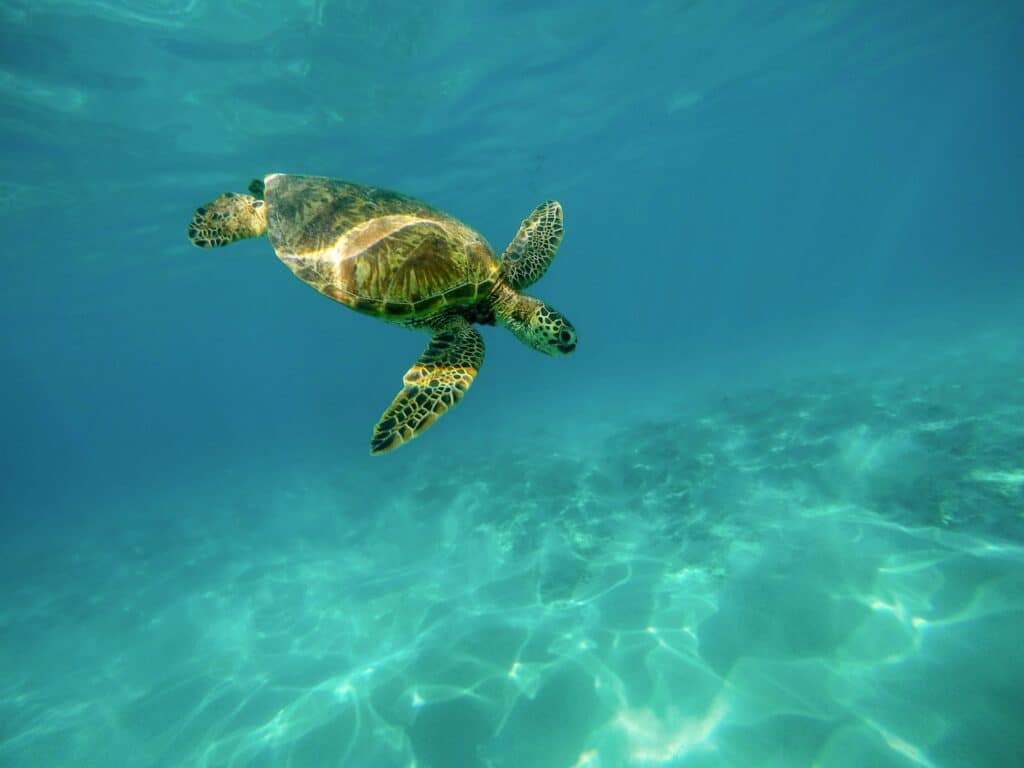
Top cultural tourism destinations in Hawaii
- Honolulu, Oahu: Honolulu, the state capital and largest city, is home to many important cultural institutions and museums. To learn more about Hawaiian culture, visit the Honolulu Art Museum, the Bishop Museum, and the Iolani Palace. The city’s diversified population helps sustain a busy cultural calendar of events and celebrations throughout the year.
- Hilo (Big Island): Hilo, located on the Big Island, is well-known for its strong ties to Hawaiian history and culture. The Pacific Tsunami Museum will teach you about the area’s geological past, and the Imiloa Astronomy Center will teach you about Hawaiian astronomy and culture. Hilo is particularly well-known for its cultural celebrations and hula festivals.
- Lahaina (Maui): The well-preserved structures and sites of Lahaina, a former whaling town, provide a window into Hawaii’s past. Learn about the history of Lahaina at the Baldwin Home Museum, Banyan Tree Park, and the Lahaina Historic Trail. Cultural events, including as the yearly Lahaina Plantation Days Festival, are also held in Lahaina.
- Kealakekua (Big Island): The Big Island’s Kealakekua Bay has deep roots in Hawaiian culture. There is a monument commemorating Captain James Cook’s first landing in Hawaii. The area is also a fantastic place to go snorkeling and see the abundant marine life.
- Wailuku (Maui): The county capital of Maui is a cultural melting pot with a rich historical past. Visit the Wailuku Heritage Trail, which features important cultural and historical landmarks, and the Bailey House Museum, which displays Hawaiian antiquities. Exciting cultural events take place every month on the first Friday of the month.

Where to experience ecotourism in Hawaii?
Hawaii travel guide is incomplete with a great place to do ecotourism. Because of its variety of ecosystems and dedication to protecting special regions, Hawaii is great for ecotourism. Here are some of Hawaii’s best ecotourism spots:
- Haleakala National Park (Maui): The park has the inactive Haleakala volcano, which provides stunning views of the dawn and sunset. Hikers can see indigenous species like the Hawaiian goose along the park’s pathways.
- Hawaii Volcanoes National Park: See the extraordinary geological activity of the Earth at Klauea and Mauna Loa, two active volcanoes. Explore the Jaggar Museum and the surrounding lava fields on foot.
- Kauai’s Na Pali Coast: Hike the Kalalau Trail or take a boat excursion to get a feel for this wild coastline. Naturalists will be blown away by the beautiful cliffs, verdant valleys, and abundance of aquatic life.
- Molokai: The “Friendly Isle,” is well-known. Visit the island’s rural heart by hiking through Kalaupapa National Historical Park and Halawa Valley.
- Mount Kea: Visit the top of Mauna Kea, widely considered to be the finest observing platform in the world. Tours of Mauna Kea and use of telescopes for gazing at the stars can be arranged through the Mauna Kea Visitor Information Center.
- Waipio Valley in Big Island: Waipio Valley, also called the “Valley of the Kings,” is a verdant, hidden haven. Explore the valley’s waterfalls and historical significance on a guided horseback ride or by hiking down to the valley bottom.
- Maui’s Molokini Crater: Explore Molokini Crater, a submerged volcanic crater, while snorkeling. Marine life, such as tropical fish and coral, thrive in its pristine waters.
Touring Hawaii, how to get around
Getting from one place to another in Hawaii might be half the fun when visiting the state. Learn to go about Hawaii with this travel guide:
- Automobile Rentals: One of the most practical methods to get around Hawaii is by renting a car, especially on the Big Island, Maui, and Kauai where the population density is lower. During busy times, it’s best to reserve a room ahead of time.
- Buses: The largest network of public buses, known as “TheBus,” that services Honolulu and its suburbs is located on the island of Oahu. On other islands, you can only use a few buses or shuttles to get about.
- Domestic Flights: Interisland flights are a convenient way to get from one island to another. Some airlines provide frequent service between major airports, and Hawaiian Airlines and Southwest Airlines are two examples.
- Ferries: Some of the islands are connected by a limited ferry service, primarily between the islands of Maui and Lanai or Maui and Molokai. Double-check the availability and departure times for these routes.
- Taxi and Ride-share: In cities, you can take a taxi, but be prepared to pay a hefty fare. Oahu is the most popular island for ride-sharing services like Uber and Lyft, but they are available elsewhere throughout Hawaii.
- Shuttle Services: Many hotels and resorts provide free shuttle service to local hotspots including museums, beaches, and airports. Make sure there is room at your chosen hotel.
- Taxi Tours: Hawaii taxi drivers may give you a private tour of the island, complete with recommendations from a native.
What to buy in Hawaii?
Buying souvenirs in Hawaii is a great way to take some of the islands’ unique culture and natural beauty back with you. Take gifts for your family and friends of memorable journey:
- Aloha shirts: Floral patterns and other local elements should be prominent in everything you choose to buy and are a great gift.
- Lei: Leis, crafted from real flowers, are a traditional sign of welcome and joy in Hawaii. While fresh leis are nice, a better souvenir would be one made of silk or shells.
- Hawaiian Jewelry: The honu (turtle) is a common motif in Hawaiian jewelry, as are plumeria blossoms and the Maile leaf. Black coral, seashells, and koa wood are just some of the materials you should keep an eye out for.
- Local Art: The natural beauty of the islands has inspired a thriving art industry in Hawaii, where visitors may see paintings, sculptures, and pottery. Gallery owners and artists alike are busy these days.
- Hula Instruments: Unique and culturally significant souvenirs include hula skirts, gourds, and ipu drums, all of which are traditional hula implements. You can look for them in bookstores and libraries with a focus on culture.
- Ukulele: Hawaii is a great place to find a high-quality ukulele, which is a traditional Hawaiian instrument. You should get one to remember this by, or maybe to learn to play.
- Molten Rock: Items made from molten rock ten Many lava rock trinkets, from necklaces to sculptures to salt & pepper shakers, are inspired by Hawaii’s volcanic past.
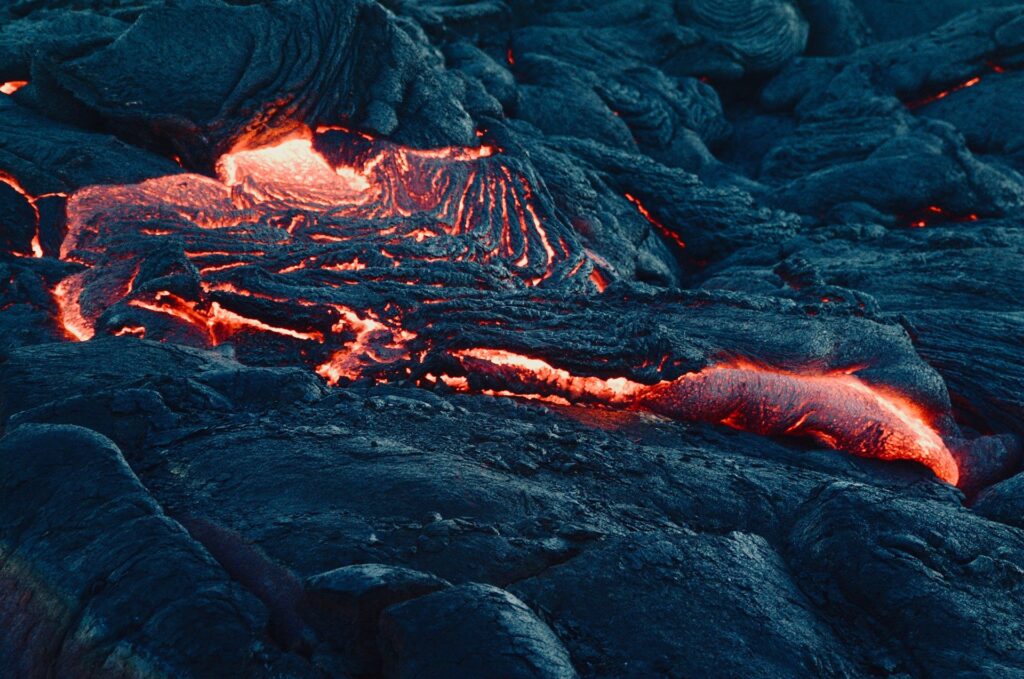
Frequently Asked Questions
A visa is not required for U.S. citizens visiting Hawaii from the contiguous United States. Given that Hawaii is a U.S. state, domestic travel regulations are to be followed.
To stay connected in Hawaii using an eSIM, you can follow these steps:
Ensure your smartphone is eSIM-compatible.
Before your trip, purchase an eSIM card or plan from a local or international provider that offers coverage in Hawaii.
Download the eSIM profile provided by your chosen provider. Holafly eSIM Hawaii is a great choice. If you are traveling to other places, an eSIM for the USA is a great option, too.
Activate the eSIM profile on your phone according to the instructions provided.
Ensure your device is unlocked and compatible with the local network bands in Hawaii to get the best signal.
Enjoy mobile data, calls, and text services while exploring the islands.
In Hawaii, most hotels, restaurants, and shops accept credit and debit cards. Small purchases and trips to outlying places where credit card acceptance may be spotty both call for cash on hand.
The waters and beaches of Hawaii are gorgeous, but ocean safety should always be a priority. Pay close attention to any posted warnings, lifeguard directions, and the state of the water. Rip tides and other strong currents pose a threat to swimmers. It is best to swim at beaches with lifeguards and at beaches that are appropriate for your swimming ability.

























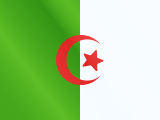

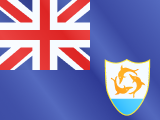



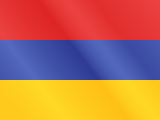





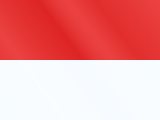
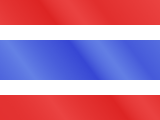







 Pay
Pay  Language
Language  Currency
Currency 


















 No results found
No results found
